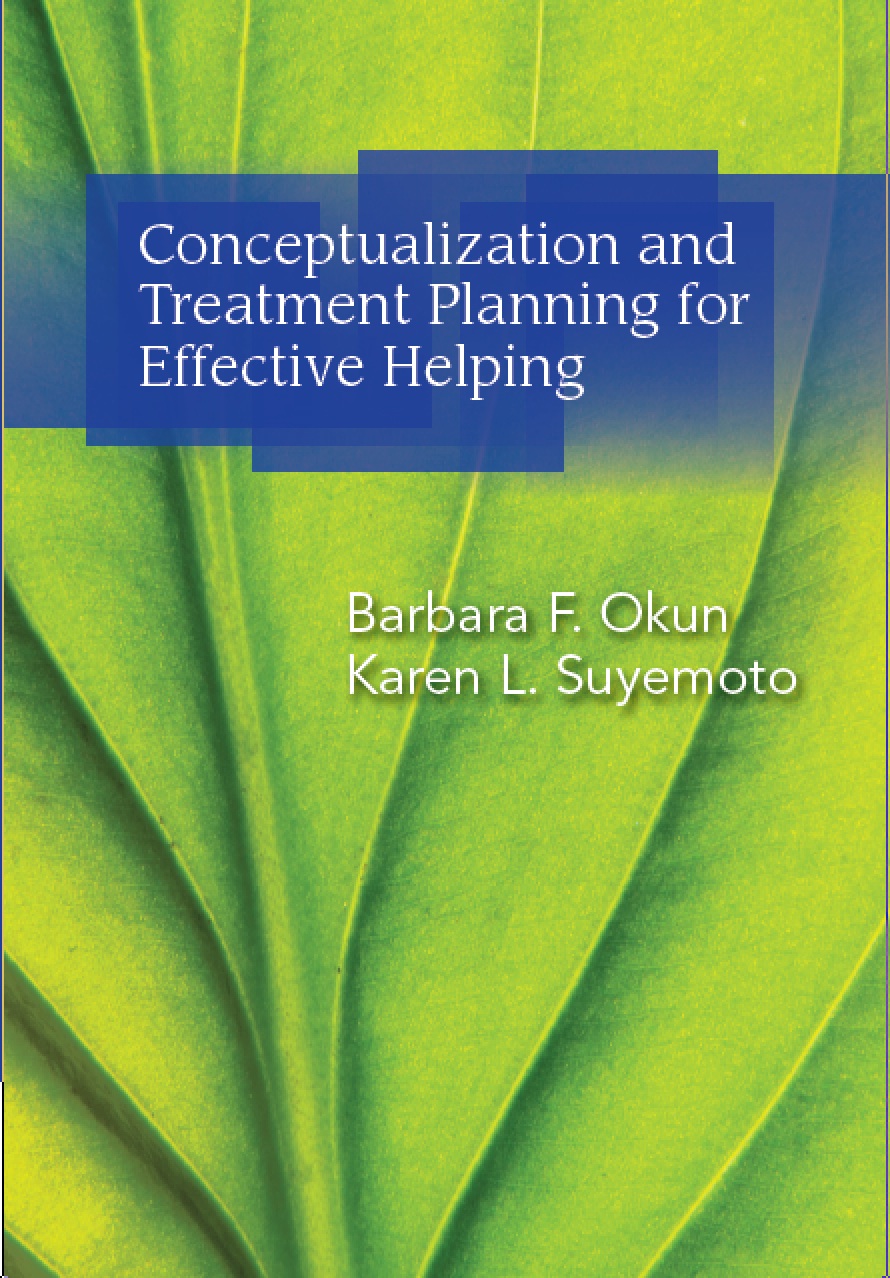Book Review—Conceptualization and Treatment Planning for Effective Helping
 Conceptualization and Treatment Planning for Effective Helping by Barbara F. Okun and Karen L. Suyemoto (2013) is presented as a two-section book. The chapters in section one are intended to facilitate the choice and development of a theoretical orientation for counseling trainees. These chapters intend to accentuate the connection that exists between theoretical approaches to counseling and the specific implications in formulating a case conceptualization, as well as a sound treatment plan. Section two of the book focuses on the process of conceptualization and treatment planning. This section incorporates an integrative approach and is intended to be more practically oriented.
Conceptualization and Treatment Planning for Effective Helping by Barbara F. Okun and Karen L. Suyemoto (2013) is presented as a two-section book. The chapters in section one are intended to facilitate the choice and development of a theoretical orientation for counseling trainees. These chapters intend to accentuate the connection that exists between theoretical approaches to counseling and the specific implications in formulating a case conceptualization, as well as a sound treatment plan. Section two of the book focuses on the process of conceptualization and treatment planning. This section incorporates an integrative approach and is intended to be more practically oriented.
The specific goals stated by the authors of this book are: (1) assist counselors-in-training in developing their own theoretical orientation; (2) explore the conceptualization process in light of specific theoretical approaches; (3) identify the impact that the counselors’ and clients’ worldviews, as well as their therapeutic relationships, have in case conceptualization and treatment planning; (4) assist counselors-in-training in gathering, organizing and integrating information necessary for case conceptualization and treatment planning; and (5) further develop the case conceptualization and treatment planning skills of counselors-in-training.
Section one of the book mainly focuses on the strong connection between the counselor-in-training’s understanding of change, his or her theoretical orientation and the formulation of a case conceptualization. A significant emphasis is placed on the counselor’s worldview and how it affects the understanding of clients, formulation of a case conceptualization and treatment plan, as well as the course and outcomes of counseling. The authors assume an ecological perspective and stress the importance of looking at both the counselor and client contexts. From a multicultural, advocacy and a social justice perspective, this section of the book facilitates a brief but comprehensive understanding of how these very important relational factors play a concrete role in the process of understanding both the client’s and counselor’s perspective, as well as the implications for case conceptualization and intervention.
The main goal in section two of the book is to help counselors apply their self-awareness, skills in gathering and incorporating information from clients, and understanding of the process of problem formation and change to case conceptualization and treatment planning. The authors used an integrative approach to illustrate this process and emphasize the continuous nature of the case conceptualization and treatment process. This section includes several significant contributions, including the emphasis placed on integrating information provided by multiple sources in the client’s systems, the connection to issues of multicultural competent diagnosis, and the iterative nature of the conceptualization process as an event that needs to be revisited and developed continuously and collaboratively with clients.
In general, the authors do a great job of formulating the basic parameters that could be used by advanced counselors-in-training in the often-confusing process of selecting a theoretical approach. They specifically facilitate a practical and reflective context in which counselors-in-training are able to explore the influences in their personal world views. They are able to explore, for instance, the relationship between their ideas of problem formation, change, power, privilege, health, and pathology and how this influences the choice of a specific theoretical approach. A point they are trying to make throughout the book is the importance of looking at the case conceptualization and treatment planning process through the lens of both the client and the counselor, as well as considering the issues that arise because of their interaction, and the contexts in which these interactions occur.
The authors provide specific reflective and practical strategies to illustrate the process of organizing and integrating information at different points of the case conceptualization and treatment planning process. As a whole, the book provides a good integration of conceptualization and treatment planning, and explores the connection between these factors and other aspects of the counseling process, from initial assessment and establishing therapeutic rapport to evaluation and termination.
Okun, B. F., & Suyemoto, K. L. (2013). Conceptualization and treatment planning for effective helping. Belmont, CA: Brooks/Cole.
Reviewed by: Raul Machuca, NCC, Barry University, Miami Shores, FL.
The Professional Counselor Journal
